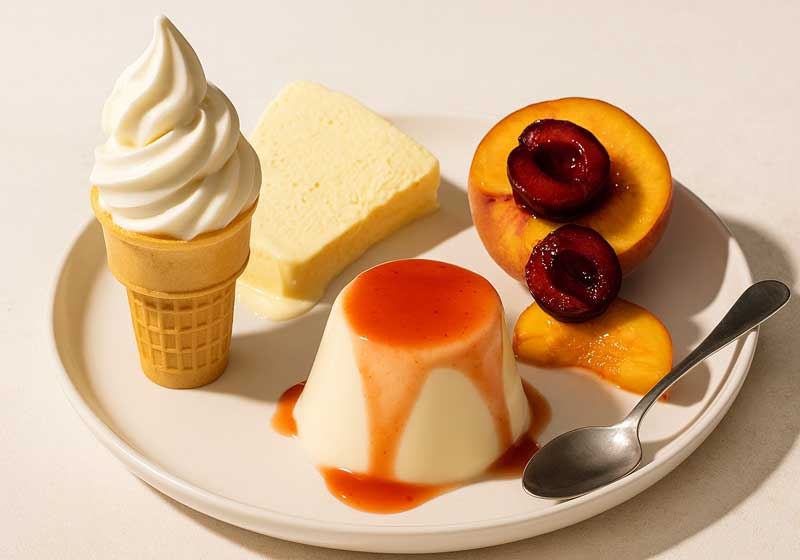Just the Facts on Easter
Easter might be a few weeks away, but living such hectic lives can cause these occasions to slip to the very back of the mind. So parents, please take this column as a gentle nudge to get one's affairs in order early, lest you wake on Easter Sunday morning to the sound of children wailing, wondering why a certain bunny has forgotten them.

Kids are funny, aren't they? A mate tells me his youngest remains utterly convinced of the Easter Bunny's existence, even though this same cherub is fully aware of the situation regarding Santa Claus. (The jig was up when she caught her father red-handed, cross-eyed, swearing and dribbling in the early hours of last December 25 as he struggled to assemble the very tricycle that Santa was supposed to be dropping down the chimney.)
One might have thought such a revelation would be a wake-up call about other much-loved characters who drop in to visit the younger members of the family from time to time. But no, my mate reckons his youngest is all agog with Easter approaching and has already begun counting the sleeps to the Easter Bunny's arrival. Come to think of it, my daughter is the same, always asking, innocent and wide eyed, ``How many eggs do you think he will leave me this year, Dad?''

I sometimes wondered what her reaction would be had I chosen to answer definitively: "Darling, there will be six small eggs, three cream-filled eggs and a small chocolate rabbit. There would also have been one large chocolate egg filled with M&Ms, except your mother and I scoffed that down on Tuesday when we had the munchies. All up, I can tell you the Easter Bunny's contribution to your celebration comes to $27.45 out of about $70 in total for the family, which makes him a darned sight cheaper than Father Christmas, though still responsible for taking a hefty whack of your father's hard-earned cash."
But I’m never cruel simply say to her, ``Love, you'll have to wait and see.''
At Easter, the giving of eggs and other chocolate treats is a time-honoured and symbolic tradition, not that my kids ever cared a jot about the symbolism. All they want to know at the dawn of Easter Sunday morning is where the "wascally wabbit” has left the goods. More consideration than my greedy urchins have ever displayed went into the first appearance of the egg as an Easter symbol. In ancient mythology, the egg symbolized The Creation, and has represented life and death in almost every race down through the ages.
Early Christian children gathered eggs and coloured them red to represent the blood of Christ. Yellow and green-dyed eggs were also popular, while Greeks and Syrians exchanged crimson eggs. By the 1200s, coloured hard-boiled eggs were all the rage on Easter Sunday and were even taken to church services to be blessed, after which they'd be returned home and given a place of honour at the meal table. Lately, decorated eggs have been making a comeback, which leads to an interesting piece of trivia. Given that the Ukrainian art of egg decoration is called pysanky, if the egg decorator has a cold, is it called hanky-pysanky?
The first chocolate Easter eggs emerged in 1873 thanks to a Mr JS Fry. The eggs were made of dark chocolate and were filled with sweets. Cadbury launched their first Dairy Milk Chocolate egg in 1905; today Cadbury makes so many chocolate eggs each year that if stacked end on end they'd be 10 times higher than Mount Everest. (Mind you, if my wife were in the room, Everest would be down to a small hillock pretty darned rapidly.)

Some people say chocolate is better than sex… One thing’s for certain, chocolate is better than sex with me. (I'm paying penance here.) Truly though, it's not a fairytale rather pure fact that Casanova used chocolate as a means of seduction and the claim that chocolate is an aphrodisiac has scientific support. Scientists have isolated phenylethylamine (they call it PEA), a stimulant found in chocolate that raises blood pressure and the heart rate. A minuscule amount is released by the brain at moments of emotional euphoria. So really, my wife’s chocolate indulgence at Easter is foreplay leading to the grand finale.
As you can imagine, there used to be strict rules governing what people ate at Easter. Speaking of restrictions, I was brought up believing there was no surer passage to the eternal fires of Hell than eating red meat on Good Friday... We ate fish. As the years passed, we encouraged Mum to be inventive when Good Friday came around and to try other white meats, like chicken or pork. Sadly, inventiveness was never her strong point, and neither was cooking. Every year we were served a slab of trout so overdone that I suspect the fish felt as sorry for us as it did for itself.
After years of strict observance of the Good Friday white meat edict, I finally gave up on it after visiting the Vatican in Rome, where I had an audience with the Pope; unfortunately, so did 55,000 others and I was forced to listen to his Easter address from the Basilica bleachers. Later, as my wife and I sat down to what we thought would be another fishy Good Friday dinner we noticed that almost every patron in the restaurant was chowing down on meals filled with delicious, tender and apparently not in the least sacrilegious red meat.
Now I'm not a Roman Catholic but I devoutly converted for that Good Friday and have remained fear and guilt-free about Good Friday dining ever since. Fish one year, chicken the next, and a juicy steak year after that… As for this year, I've been making a few enquiries about something different and daring.
Rabbit stew, anyone?

Lesser known facts about Easter
Good Friday this year is 22 April and Easter Monday is 25 April so we wanted to dig a little deeper for a refresher on why we get together and how the celebrations emerged. Today in Christian society Easter Sunday celebrates the resurrection of Jesus Christ following his crucifixion on Good Friday. However, long before Christianity began, pagan spring equinox festivals celebrated birth, the renewing of life, fertility and of course, sunrise for its rich symbolism and natural brilliance. Easter coincides with the vernal equinox (when the sun passes from the north of the equator to south of the equator) and this is where the relationship with Christianity and ancient customs stems, as a number of Easter’s current customs are actually drawn from ancient pagan festivals.
The Easter Christian Calendar begins on Shrove Tuesday (Pancake Day), some forty days before Easter and finishes with Pentecost which is 50 days after Easter Sunday. Easter always falls on a Sunday between March 22 & April 25 inclusive; the date Easter falls on varies from year to year. The precise date of Easter has often been a matter for contention. Easter was initially celebrated on the first Sunday after the earliest fourteenth day of a lunar month that occurred on or after March 21. Since the Middle Ages this practice has been modified so that Easter is now observed on the Sunday after the first full moon on or after the day of the vernal equinox.
Interesting Facts on Easter Traditions
Pancakes
Pancakes are associated with Shrove Tuesday. Pancakes were significant as they were a dish that could use up perishable foods such as milk and eggs with the addition of flour prior to Lent, which marked the beginning of 40 days of fasting.
Hot Cross Buns
On Good Friday in England, hot cross buns are a traditional favourite. While Christians have adopted the cake and the symbolism of the cross, it wasn't always so. To Pagans, then as now, the cross was symbolic of the sun wheel, which symbolizes perfect balance at the time of the Spring Equinox.
Historians write that hot cross buns were originally used in ceremonies and rituals before the Christian Church attempted to ban the buns. The ban never went through, as the specialty baking proved to be much too popular amongst the public. Left with no alternative, the church did the next best thing and "Christianized" the bread with Queen Elizabeth I passing a law which limited the bun's consumption to proper religious ceremonies, such as Christmas, Easter or funerals.
Easter Eggs
The earliest form of Easter eggs were hen or duck eggs decorated and painted in bright colours at home with vegetable dye and charcoal. The 17th and 18th centuries saw the manufacture of egg shaped toys which were given to children at this festival time. The Victorians had cardboard, 'plush' and satin covered eggs filled with Easter gifts and chocolates. The ultimate Easter egg shaped gifts must have been the fabulous jewelled creations by Carl Fabergé made during the 19th century for the Russian Czar and Czarina. Today, these superb creations are priceless museum pieces.
The first chocolate Easter eggs were made in France and Germany in the early 19th Century. A type of edible chocolate had been invented a few years earlier but it could not be successfully moulded. Some early eggs were solid while the production of the first hollow chocolate eggs must have been rather painstaking, as the moulds were lined with paste chocolate one at a time!
The modern chocolate Easter egg, with its smoothness, shape and flavour owes its progression to the two greatest developments in the history of chocolate - the invention of a press for separating cocoa butter from the cocoa bean by the Dutch inventor Van Houten in 1828 and the introduction of a pure cocoa by the Cadbury Brothers in 1866. This process made large quantities of cocoa butter available and is the secret of making moulded chocolate.
The Easter Bunny
The Easter bunny has its origin in pre-Christian fertility lore. In pagan times, the "Easter hare" was a sacred companion of the old goddess of spring, Eostre. The hare and the rabbit were the most fertile animals known and they served as symbols of the new life during the spring season. Since long before Jesus Christ was born, parents told their children that the magic hare would bring them presents at the spring festival. The presents were often painted eggs, as these represented the new life starting at this time of year.
The bunny was first used as a symbol of Easter in 16th century Germany based on when references were first mentioned in German writings. The first edible Easter bunnies, made primarily of pastry and sugar, were also produced in Germany, later on during the early 1800s.
By AGFG contributing writer L.A.Pin.





